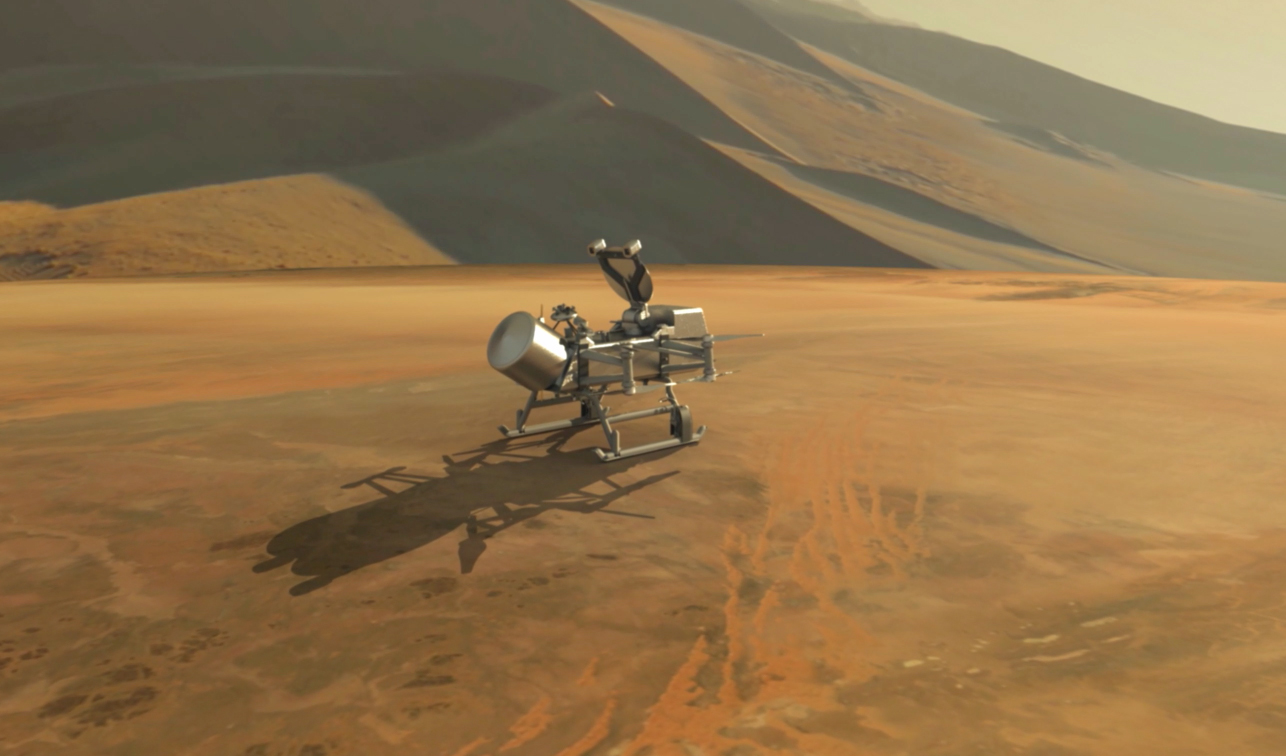Press Release
Destination: Titan
NASA Selects Johns Hopkins APL to Lead Mission to Saturn's Exotic Moon
Thu, 06/27/2019 - 12:38
It sounds like science fiction: fly a robotic rotorcraft over the dunes of an alien moon. But NASA is giving a team led by the Johns Hopkins Applied Physics Laboratory (APL) in Laurel, Maryland, the opportunity to turn this idea into space exploration reality.
NASA announced today that it has selected Dragonfly, a rotorcraft-lander expedition to Saturn’s large, exotic moon Titan, as the next mission in its New Frontiers program. Launching in 2026 and arriving in 2034, Dragonfly will explore dozens of locations across Titan, sampling and measuring the composition of Titan’s organic surface materials to characterize the habitability of Titan’s environment and investigate the progression of prebiotic chemistry.
“Dragonfly is a bold, game-changing way to explore the solar system,” said APL Director Ralph Semmel. “This mission is a visionary combination of creativity and technical risk-taking that will help us unravel some of the most critical mysteries of the universe — including, possibly, the keys to our origins. We’re honored that NASA has entrusted APL and our partners with this great opportunity and responsibility.”
Scientists consider the icy moon Titan to be the most Earth-like world in the solar system, a virtual chemistry lab that can provide clues to how life may have arisen on our planet. During its 2.7-year baseline mission, Dragonfly will explore environments from organic dunes to the floor of an impact crater, where liquid water and complex organic materials key to life once existed together. Its scientific instruments — to be built by institutions across the nation — will study how far prebiotic chemistry may have progressed. They also will investigate the moon’s atmospheric and surface properties and its subsurface ocean and liquid reservoirs.
“Titan is such an amazing, complex destination,” said Elizabeth “Zibi” Turtle, Dragonfly principal investigator from APL. “We don't know the steps that were taken on Earth to get from chemistry to biology, but we do know that a lot of that prebiotic chemistry is actually happening on Titan today. We are beyond excited for the chance to explore and see what awaits us on this exotic world.”
Titan is larger than the planet Mercury and is the second largest moon in our solar system. As it orbits Saturn, it is about 886 million miles (1.4 billion kilometers) away from the Sun, about 10 times farther than Earth. Because it is so far from the Sun, its surface temperature is around minus-290 degrees Fahrenheit (minus-179 Celsius). Its surface pressure is also 50% higher than Earth’s.

